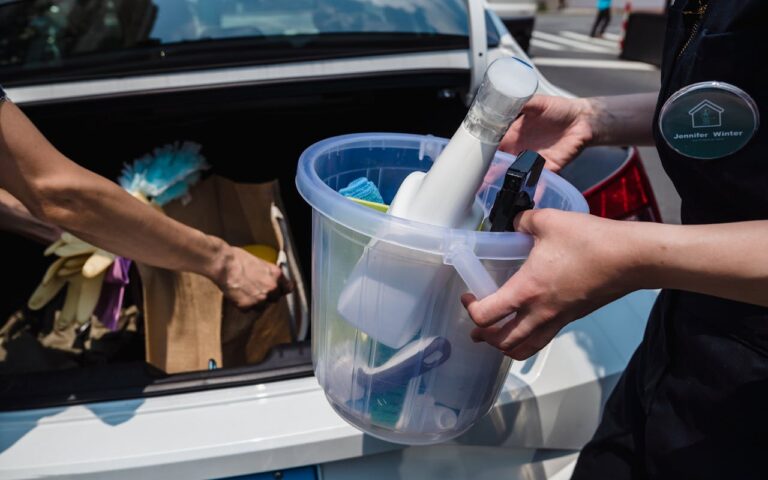Keeping your home spotless requires a solid system for managing your housekeeping cleaning supplies. From disinfectants and sponges to mop heads and brushes, having everything in the right place can save time, minimise stress, and even enhance cleanliness. Below, we outline a step-by-step guide to help you organise your cleaning essentials for peak performance.
1. Categorise Your Cleaning Products
Group by Function
Begin by grouping your housekeeping cleaning supplies according to their purpose. For instance, keep bathroom cleaners separate from kitchen products, and collect all floor-cleaning essentials together. By segmenting items into distinct categories, you can quickly locate the exact product you need without rummaging through cabinets.
Create Sub-Categories
Within each larger category, establish sub-categories for further orderliness. For example, your floor-cleaning collection might include vacuum accessories, mop heads, and specialised floor solutions. Similarly, your bathroom supplies could be broken down into toilet cleaners, glass cleaners, and mildew removers.
2. Assign Specific Storage Spaces
Use Clear Containers
Transparent bins or jars allow you to see what’s inside at a glance. This is especially useful if you have multiple products with similar packaging. Label containers clearly, so you don’t mix up your favourite disinfectant with a multi-surface spray.
Invest in Shelving
If you have a utility cupboard or space under the sink, add shelves or stacking units to maximise vertical storage. Position products you use most frequently at eye level, reserving the top and bottom shelves for items you use less often.
3. Keep Essential Tools Easily Accessible
Create a ‘Quick Grab’ Caddy
A portable caddy stocked with basics—like an all-purpose cleaner, glass spray, microfibre cloths, and sponges—can be a game-changer. Instead of repeatedly returning to your storage area, you can move from room to room with your key essentials to hand.
Store Bulky Tools Efficiently
Floor cleaners, steam mops, and vacuum cleaners often demand more space. Designate a corner or nook where you can neatly store these larger machines. Make sure electrical cords are wrapped and secured to prevent tangling.
4. Label Everything
Avoid Confusion
A simple labelling system can dramatically reduce the time it takes to find what you need. Use a label maker or permanent marker to identify product categories, expiry dates, and instructions if necessary.
Emphasise Safety
Clear labelling is crucial for preventing mishaps. Chemicals containing bleach, for example, should be instantly recognisable to minimise the risk of mixing it with incompatible substances, such as ammonia-based cleaners.
5. Regularly Check Stock and Expiry Dates
Conduct Routine Inventory Checks
Every few weeks or once a month, take a quick inventory of your housekeeping cleaning supplies. Note which products are running low and replenish them before they run out. This simple practice avoids last-minute dashes to the shop when you’re in the middle of a cleaning spree.
Rotate Products
If you have stockpiled additional cleaning solutions or detergents, place the newest items at the back. This ensures older stock is used first, helping you avoid waste by letting products sit around and expire.
6. Prioritise Safety Measures
Store Hazardous Items Securely
Items like bleach, strong disinfectants, or drain cleaners should be kept in a locked cupboard or out-of-reach shelving if you have children or pets. This precaution minimises the likelihood of accidental spills or ingestion.
Use Protective Gear
Gloves, goggles, and face masks can be essential depending on the type of cleaning task at hand. Keep these safety accessories readily available, ideally in the same area as the chemicals you’ll be using.
7. Simplify and Declutter
Eliminate Redundancies
If you’ve accumulated duplicate or underperforming products, consider consolidating or disposing of them responsibly. Fewer, well-chosen items not only save storage space but also make it easier to keep track of what you already own.
Create a ‘Donations or Disposal’ Bin
Sometimes, products don’t meet your needs or preferences. Dedicate a small box or bin to collect any cleaning supplies you plan to donate or safely dispose of. Make sure to check local guidelines for chemical disposal or recycling.
Conclusion
A neatly organised system for housekeeping cleaning supplies can vastly improve the efficiency and effectiveness of your cleaning routine. By categorising products, assigning clear storage zones, and labelling everything, you’ll find that even the most daunting tasks become more manageable. Ultimately, well-organised cleaning supplies lead to a safer home environment and a streamlined daily routine—making those inevitable tidying sessions less of a chore and more of a quick, fuss-free process.
